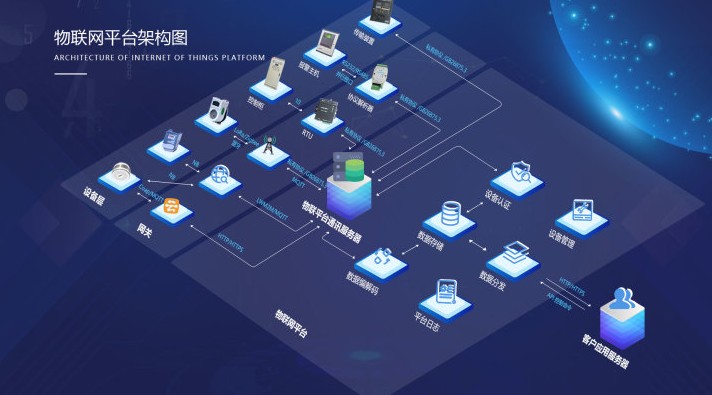The Internet of Things (IoT) is a new technology and application model based on the Internet. It combines multiple technologies such as sensors, computers, and networks to achieve a seamless connection between the physical world and the digital world. In order to better support the application of the Internet of Things, the Internet of Things system usually adopts a four-layer architecture for design and implementation. Below, we will introduce in detail the concepts, characteristics and applications of the four-layer architecture of the Internet of Things.

1. Perception Layer The perception layer is the bottom layer of the Internet of Things architecture. It is responsible for collecting and processing various data in the physical world, including temperature, humidity, air pressure, light intensity, sound and other sensor data. The key technologies of the perception layer include sensors, embedded systems, RFID, etc. Its main function is to convert the information of the physical world into digital signals and transmit them to the upper layer of the Internet of Things.
2. Network Layer The network layer is the middle layer of the Internet of Things architecture. It is responsible for processing, forwarding and transmitting the data collected by the perception layer. The key technologies of the network layer include protocol conversion, routing, wireless communication, etc. Its main function is to transmit the data collected by the perception layer to the application layer, and process and filter the data.
3. Service Layer The service layer is the core layer of the IoT architecture. It is responsible for providing various application services and supporting the business functions of the IoT system. The key technologies of the service layer include data processing, analysis, storage, sharing, etc. Its main function is to provide various data support and processing functions for the application layer to meet the various needs of users.
4. Application Layer The application layer is the top layer of the Internet of Things architecture. It is responsible for providing various specific application services and solutions. The key technologies of the application layer include smart home, smart city, smart transportation, etc. Its main function is to realize various specific Internet of Things applications and provide users with a more intelligent, convenient and secure service experience.
The characteristics of the four-layer architecture of the Internet of Things include: clear hierarchy, division of labor and collaboration, independent functions, and interdependence. Through the design of a four-layer architecture, the Internet of Things system combines multiple technologies such as sensors, computers, and networks to achieve a seamless connection between the physical world and the digital world, providing users with a more intelligent, convenient, and secure service experience.At the same time, the four-layer architecture of the Internet of Things is also an scalable